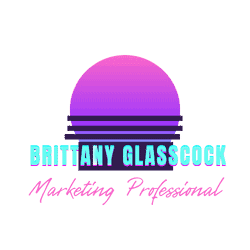There’s a misconception that short-form content is more effective than ebooks or manuals simply because it’s shorter. This is simply not true. Beyond writing what your audience wants to read, a well-designed content offer needs to be accessible. It doesn’t matter how much copy is there–as long as the information is presented well, it’s a great content offer.
One of the ways writers can make their copy more visually appealing and readable is by using chunking and white space in your published content offer.
What is white space and chunking in writing?
White space
White space, also known as negative space, is the area between elements in a design or page layout that is left intentionally blank. It’s not necessarily the color white, rather a space that has no writing or imagery. White space gives readers the chance to visually “breathe.” Writers and designers use white space to break up copy and create a content experience that is more readable, scannable, and engaging.
Chunking
Chunking is exactly how it sounds: writers can “chunk” their copy into separate, smaller parts. White space shows readers where to look next and chunking shows readers where to focus. Writers can chunk copy into smaller paragraphs, add headings, and use bullet points to help readers scan and digest the content quickly.
Why do white space and chunking matter?
White space and chunking can be the difference between a content offer that drives ROI and writing that people don’t read. In my (not hyperbolic at all) opinion, not using these tools is an asset’s death sentence: Supporting visuals get lost in the text, bounce rates increase, and great copywriting becomes unreadable.
The importance of white space
White space is essential in content creation because it allows readers to rest their eyes, making the copy more engaging and less overwhelming. It helps to highlight important information and improve comprehension by separating and grouping related information together.
Used properly, white space brings a balance to copy that makes readers want to keep reading. The content will look less cluttered, which can be especially important for longer or graphic-rich offers. Most importantly: white space is crucial for accessibility and readability. Content with white space creates natural pauses that allow readers to digest and absorb the information better.
The importance of chunking
There’s no way to create white space without chunking. Chunking can break down a large piece of content into smaller, more manageable pieces. This is a valuable tool for copywriters that want the reader to focus on a major idea or definition. Organizing copy into shorter paragraphs, using subheadings, and bullet points makes it easier for readers to scan and understand what they’re reading.
Chunking content makes it easier for readers to navigate the copy. They can quickly scan and find the information they’re looking for without having to read through large blocks of text.
Chunking also helps to create a visual hierarchy. By using different font sizes, bold or italicized text, and subheadings, writers can create a hierarchy that guides readers through the copy. This makes it easier for readers to understand the structure and the relationship between different pieces of information.
How writers can effectively use white space and chunking
Break up content into smaller paragraphs
One of the simplest ways to chunk content is to break it up into smaller paragraphs. Ideally, each paragraph should contain only one idea or topic, and introduce a new idea or transition to a new topic in another paragraph. Visually, a paragraph shouldn’t be longer than 3 lines.
Use subheadings to organize content
Subheadings are an effective way to break up copy and make it more scannable. Use subheadings to introduce new sections and break the copy into smaller chunks. Make sure the subheadings accurately reflect the content that follows.
Use bullet points to highlight important information
Bullet points are an excellent way to highlight key information. Use bullet points to list out items or highlight important details. Readers will be able to scan (and retain) important information much easier.
Use a (borderline) obscene amount of white space
Don’t be afraid to use a lot of white space. Use line breaks, margins, and spacing to create natural breaks between paragraphs and sections of content. Important to remember: white space is also known as negative space. So make sure there are no words or graphics in white space areas. (Note: If there are visuals in the offer, they will also need white space to draw the reader’s eye.)
Edit and revise to accommodate white space and chunking
Make sure to edit and revise the copy before designing it. Read through to see if there are any ways to break up the writing into shorter paragraphs or show information in bullet points.
Avoid extra copy and “fluffy” phrases that aren’t directly related to the topic. Remove any metaphors, adjective clusters, and small asides that could take away from the content offer’s message.
White space and chunking are essential tools for copywriting
I’ll probably always have big opinions on chunking text and using white space.* It creates content that is easy to read, accessible, and engaging. By breaking up content into smaller chunks, and using plenty of white space, great writing becomes a valuable content offer. Remember to use a consistent format and to edit and revise your content to ensure it’s focused and concise. If you’d like to talk to me more about it, let’s get in touch.
*I’m aware I have strange interests, my cat thinks I’m cool.

